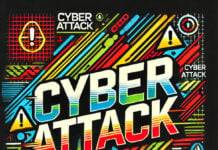
In recent years, the rise of AI-generated art and animation has sparked a revolution in how creative content is produced. Among the most notable examples is the trend of creating artworks inspired by Studio Ghibli’s iconic animation style. With its distinct aesthetic, emotional storytelling, and enchanting visuals, Ghibli’s art has inspired a global audience and is now being replicated by AI tools that can generate similar animations. However, this new wave of technology has raised important cybersecurity concerns that need to be addressed as the line between human creativity and artificial intelligence blurs.
The Rise of AI-Generated Art
AI-driven art tools, such as DALL·E, MidJourney, and other image generation platforms, have made it possible for anyone with a computer to create artwork in the style of famous artists or animation studios. One particular trend that has emerged is the fascination with Studio Ghibli’s signature art style — with its lush landscapes, imaginative creatures, and whimsical characters. Fans of Ghibli, as well as digital artists, have eagerly embraced the opportunity to use AI to generate their own Ghibli-inspired creations, often using keywords or prompts like “Ghibli-style landscapes” or “Studio Ghibli character design” to guide the AI’s output.
While these AI tools have opened up new avenues for artistic expression, they also raise significant cybersecurity concerns that cannot be overlooked.
Intellectual Property Issues
One of the primary concerns surrounding AI-generated Ghibli-style content is intellectual property (IP) infringement. Studio Ghibli has built its reputation over decades by creating original works, such as My Neighbor Totoro, Spirited Away, and Princess Mononoke. These films have become deeply embedded in global culture, and their unique art style is instantly recognizable.
When AI systems are used to generate artwork that mimics the Ghibli aesthetic, it raises the question of whether this constitutes a violation of copyright laws. AI can be trained on large datasets that include Ghibli-style imagery, but it’s still debated whether replicating this style is an infringement on the studio’s intellectual property. For instance, is a Ghibli-inspired work a derivative of an existing copyrighted creation, or does it stand as a new, independent piece of art?
As more content creators use AI to produce Ghibliesque works, the lines between homage, imitation, and infringement become increasingly blurry. Additionally, without proper regulation, these AI-generated artworks could be monetized without fair compensation to the creators who originally pioneered the style.
Data Privacy and Security Concerns
The use of AI tools for generating artwork also brings with it potential privacy and security risks. Many AI-driven platforms require users to input data — including personal information, preferences, and even prompts for the artwork they wish to create. This data is often processed through cloud-based systems, which could be vulnerable to cyberattacks.
If hackers gain access to these platforms, they could potentially exploit user data for malicious purposes. For instance, personal information could be used for identity theft or sold on the black market. Furthermore, as AI tools become more widely used, the data they generate could be misused, especially when it comes to content creation that mimics established works. Hackers could use AI-generated art to create counterfeit products or pirated content, which could flood the digital market with fake items, impacting legitimate artists and studios.
Moreover, there’s also the risk of AI systems themselves being compromised or manipulated. Cybercriminals could tamper with AI-generated content, creating fake artwork that might deceive audiences into believing it’s an official release from Ghibli. This could lead to the spread of misinformation and pose challenges to content authenticity and security in the creative industry.
Deepfake and Synthetic Media Threats
One of the more alarming cybersecurity concerns surrounding AI-generated Ghibli-style content is the potential for deepfakes and synthetic media. Deepfake technology has already been used to create hyper-realistic but fake videos, images, and audio, often for malicious purposes. As AI tools advance, it’s conceivable that similar techniques could be used to produce synthetic Ghibli-style animations that mislead audiences into thinking they are authentic Ghibli works.
For example, an AI could create a new, convincing Ghibli-style video that seems like a new release from the studio. If such videos were shared widely on social media, it could cause confusion among fans and even lead to the spread of fake news about future projects from the studio. In extreme cases, these AI-generated works could also be used to defraud viewers or advertisers by promoting fake content as legitimate.
As the technology continues to evolve, it will become increasingly difficult to differentiate between authentic Ghibli content and AI-generated imitations, leading to potential reputational damage for the studio and loss of trust in the creative industry as a whole.
The Need for Regulation and Ethical AI
To address these growing cybersecurity concerns, the implementation of regulations governing AI-generated art is crucial. Artists, creators, and companies like Studio Ghibli need to advocate for stronger copyright protections for digital works generated by AI, as well as better security practices to safeguard users’ data. AI companies themselves must also take responsibility by adopting ethical guidelines to ensure that their tools are not used for malicious or deceptive purposes.
On the ethical front, it’s important that AI-generated art does not replace the human element of creativity. While AI can be a powerful tool for assisting artists, it should not overshadow the originality and human touch that define true artistry. For creators looking to explore AI as a means of generating Ghibli-style content, it’s essential to acknowledge the balance between inspiration and imitation, ensuring that new works do not exploit or infringe upon the intellectual property of the original creators.
Conclusion
As AI technology continues to make strides in the world of art and animation, the generation of Ghibli-inspired content is an exciting frontier. However, it also brings to light critical cybersecurity concerns surrounding intellectual property, data privacy, and the authenticity of digital media. To preserve both the creative integrity of the industry and the security of users, it’s vital that clear ethical guidelines and robust regulations be put in place. In the end, AI should serve as a tool that complements human creativity, rather than replacing it, while ensuring that the digital landscape remains safe and secure for



















